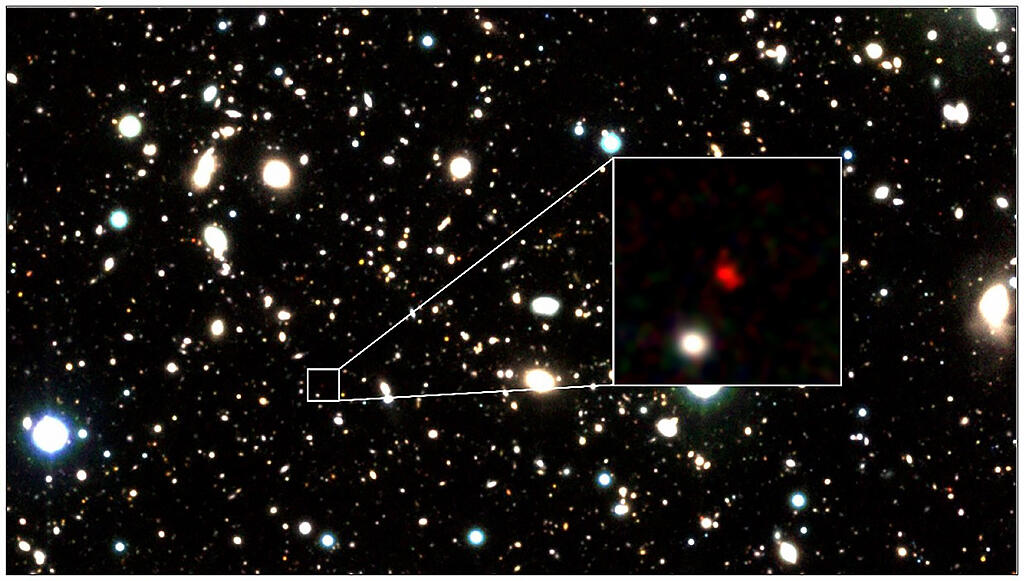An international research team led by Assistant Professor Yuichi Harikane of the Institute for Cosmic Ray Research, the University of Tokyo, and Professor Akio Inoue of the Faculty of Science and Engineering, School of Advanced Science and Engineering, Waseda University, has discovered HD1, a candidate bright galaxy 13.5 billion light years from Earth. The discovery suggests that bright objects like HD1 already existed in the universe only 300 million years after the Big Bang. The galaxy was selected as a target for the cycle 1 observations by the James Webb Space Telescope, launched last year, and if spectroscopic observations confirm its exact distance, it will be the most distant galaxy ever recorded. The team's findings were published in the electronic version of The Astrophysical Journal.

(Credit: Harikane et al.)
HD1, a candidate object for the earliest/most-distant galaxy at 13.5 billion light-years away, was discovered from among more than 700,000 objects from over 1,200 hours of observation data taken by the Subaru Telescope, VISTA Telescope, UK Infrared Telescope, and Spitzer Space Telescope. "It was very hard work to find HD1 out of more than 700,000 objects," says Yuichi Harikane, an assistant professor. "I searched the image data many times while changing the search conditions of the galaxy and was finally able to find HD1 over several months. HD1's red color matched the expected characteristics of a galaxy 13.5 billion light-years away surprisingly well, giving me a small feeling of goosebumps when I found it. After a detailed analysis using a spectral model of the galaxy, we concluded that the most plausible interpretation was that HD1 was 13.5 billion years old. But to be sure, we need spectroscopic observations that can measure the exact distance."
To detect the oxygen emission lines, the research team made spectroscopic observations using the ALMA observatory. Professor Inoue, who led the ALMA observations, says, "We found a weak signal at the frequency where an oxygen emission line was expected. The statistical significance of the signal is 99.99%. If this signal is real, this is evidence that HD1 exists 13.5 billion light-years away, but we cannot be sure without a significance of 99.9999% or more. On the other hand, the weak signal may indicate that there is little oxygen, which means that HD1 has the properties of a freshly formed primary galaxy."
HD1 is very bright, suggesting that bright objects like HD1 already existed in the universe only 300 million years after the Big Bang. However, the existence of HD1 had not been predicted by previous theoretical models of galaxy formation. The physical properties of HD1 are shrouded in mystery as observational information about it is limited. It is thought to be a very active star-forming galaxy, but it might be an active black hole. HD1 was selected as a target for the cycle 1 observations by the James Webb Space Telescope, launched last year. Dr. Harikane is also leading observations with this space telescope. "We will observe HD1 with NIRSpec, one of the spectrographs on the James Webb Space Telescope. If the spectroscopic observation confirms its exact distance, HD1 will be the most distant galaxy ever recorded, 100 million light-years further away than GN-z11. We are looking forward to seeing the Universe with the James Webb Space Telescope," he added.
This article has been translated by JST with permission from The Science News Ltd.(https://sci-news.co.jp/). Unauthorized reproduction of the article and photographs is prohibited.




